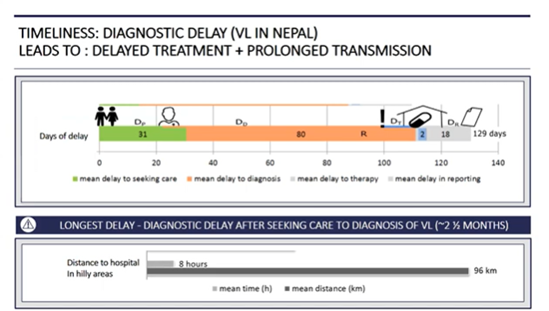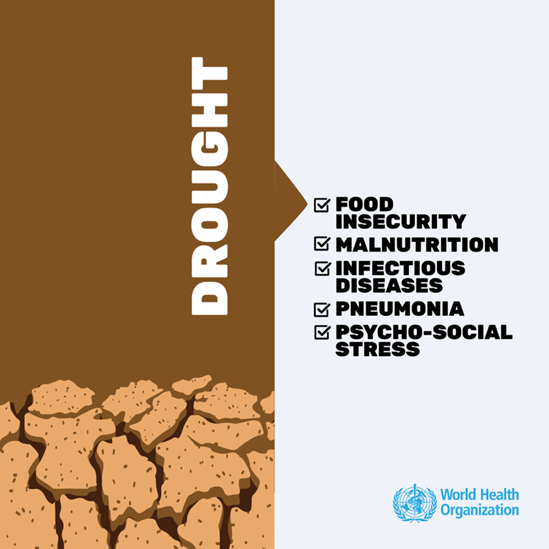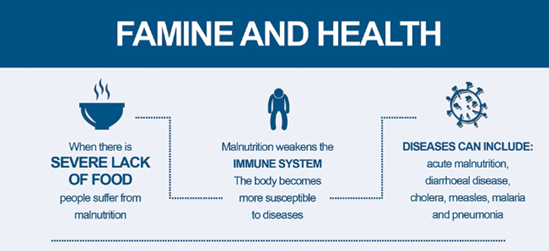Drought
Drought is a prolonged dry period in the natural climate cycle that can occur anywhere in the world. It is a slow-onset disaster characterized by the lack of precipitation, resulting in a water shortage. Drought can have a serious impact on health, agriculture, economies, energy and the environment.
An estimated 55 million people globally are affected by droughts every year, and they are the most serious hazard to livestock and crops in nearly every part of the world. Drought threatens people’s livelihoods, increases the risk of disease and death, and fuels mass migration. Water scarcity impacts 40% of the world’s population, and as many as 700 million people are at-risk of being displaced as a result of drought by 2030.
Rising temperatures caused by climate change are making already dry regions drier and wet regions wetter. In dry regions, this means that when temperatures rise, water evaporates more quickly, and thus increases the risk of drought or prolongs periods of drought. Between 80-90% of all documented disasters from natural hazards during the past 10 years have resulted from floods, droughts, tropical cyclones, heat waves and severe storms.
When drought causes water and food shortages there can be many impacts on the health of the affected population, which may increase the risk of disease and death. Drought may have acute and chronic health effects, including:
- malnutrition due to the decreased availability of food, including micronutrient deficiency, such as iron-deficiency anaemia;
- increased risk of infectious diseases, such as cholera, diarrhoea, and pneumonia, due to acute malnutrition, lack of water and sanitation, and displacement;
- psycho-social stress and mental health disorders;
- disruption of local health services due to a lack of water supplies, loss of buying power, migration and/or health workers being forced to leave local areas.
Severe drought can also affect air quality by making wildfires and dust storms more likely, increasing health risk in people already impacted by lung diseases, like asthma or chronic obstructive pulmonary disease (COPD), or with heart disease.
As the health cluster lead for global emergencies, WHO works with Member States and partners to respond to drought-related disasters. This includes calling for and coordinating emergency funding to support health actions and assembling mobile heath teams and outreach. WHO also works to ensure appropriate food supplementation is available to the affected areas, as well as support for child, maternal and mental health services.
Drought can be a catalyst for outbreaks of other diseases due to reduced water for drinking, cooking and sanitation, and strains on food resources. WHO works to provide epidemic surveillance, early warning and response programs and preventative immunization efforts to mitigate the effects of disease in drought-stricken areas.
Food production is particularly at risk from drought, the implications of which can last long after the drought itself is over. Droughts can also cause large numbers of people to become refugees in neighbouring areas or countries, which stretches the resources of the host area. WHO works to reduce the impacts of these effects through coordination with aid agencies and governments.










